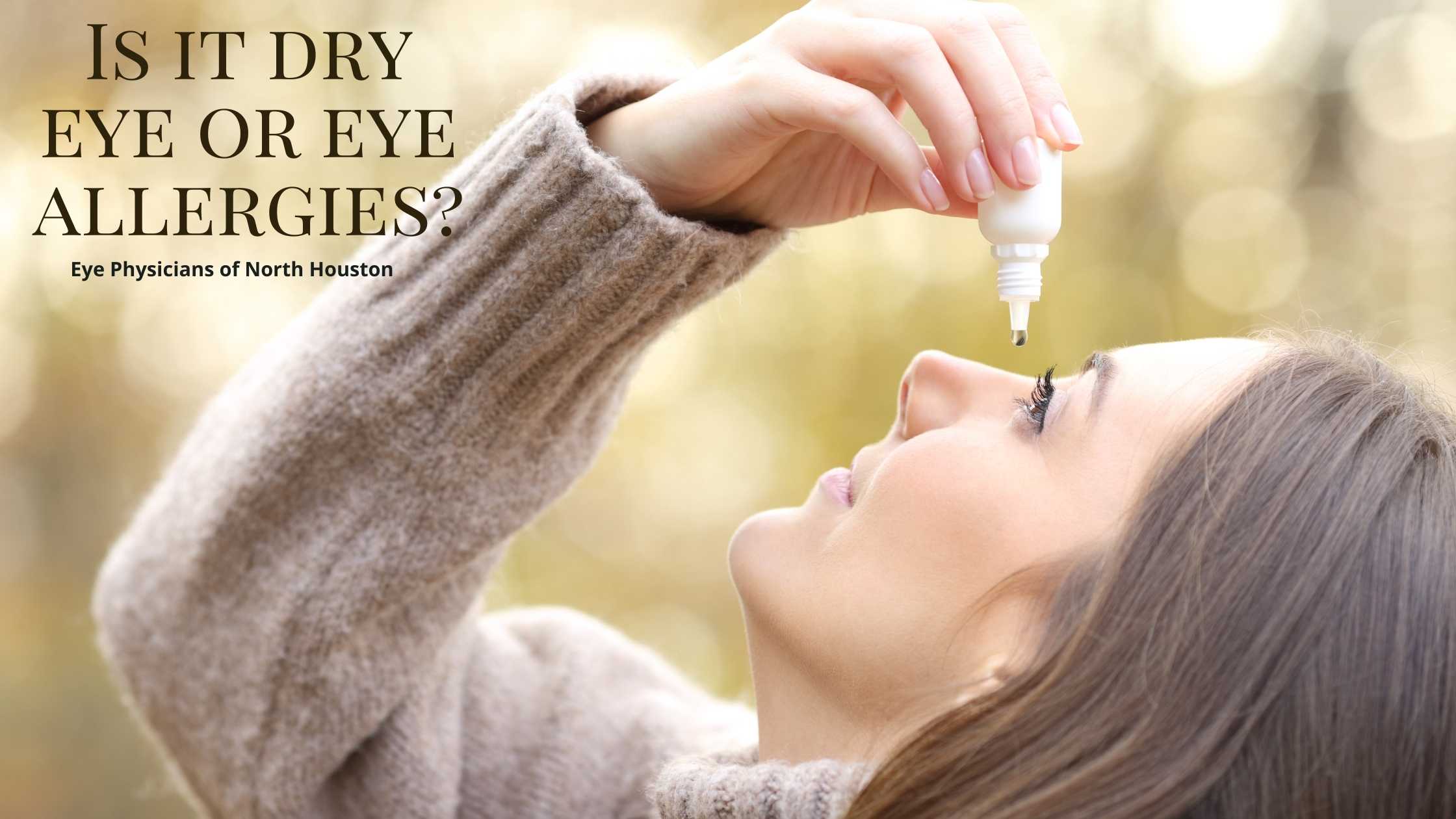The first day of spring is Saturday, March 20, 2021. Associated with fresh beginnings, spring is a beautiful time of year in which you can see stunning, native bluebonnets and other wildflowers burst to life in Texas. Unfortunately, this also means an increase in pollen, which can cause eye allergies and exacerbate dry eye.
Symptoms of Dry Eye
There are two types of dry eye: aqueous deficiency and evaporative. The former is caused by inadequate production of aqueous humor, and the latter, excessive moisture loss from the eye’s surface in the presence of normal tear function. It is a chronic condition, which requires ophthalmology care, affecting millions of Americans. Dry eye can cause you to experience the following symptoms:
- Blurry vision
- Red, irritated eyes
- Sensitivity to light
- Eye stinging or burning
- A scratchy or gritty feeling in your eye
Symptoms of Eye Allergies
Eye allergies, more formerly known as allergic conjunctivitis, occur in response to an allergen triggering your eye’s mast cells to release histamine. These allergies are frequently observed during the spring and other seasons associated with high pollen counts. You can find temporary relief by using preservative-free over-the-counter artificial tears but should consult an ophthalmologist for chronic eye irritation. Common symptoms include:
- Redness
- Itchy eyes
- Swollen eyelids
- Sensitivity to light
- Stinging or burning feeling
Caring for Your Eyes in the Spring
Avoid Allergens
To avoid allergens and reduce discomfort, it is a good idea to limit your time outdoors as much as possible, especially when the pollen count is high or the wind is blowing. You can check pollen counts and weather conditions online.
Wear Sunglasses
Protect your eyes from allergens, debris, and harmful UV rays by donning a pair of sunglasses anytime you go outside. Look for sunglasses that provide 100% protection from ultraviolet radiation. UV400 rated glasses, and those that block both UV-A and UV-B, are also good choices.
Use Artificial Tears
You can use these drops as often as you need to, assuming they are preservative-free, for temporary relief from the symptoms of eye allergies or dry eye. Artificial tears can be purchased over-the-counter.
Diagnosing and Treating Eye Conditions
Because proper diagnosis is critical – treatments vary depending on whether you present with dry eye or eye allergies – scheduling an appointment with an experienced, board-certified ophthalmologist is essential.
Using only the most advanced technologies and techniques, the doctors at Eye Physicians of North Houston provide patients with compassionate, comprehensive eye care. Our practice serves residents throughout Houston and the neighboring communities of Texas.
Protect your eyes and find relief for dry eye by scheduling an appointment with the Eye Physicians of North Houston today. We can be reached Monday through Friday from 8:00 am to 5:00 pm at (281) 893-1760. We are closed on Saturdays and Sundays.
Resources:
“Dry Eye.” The National Eye Institute.
“First Day of Spring 2021: The Spring Equinox.” The Old Farmer’s Almanac.
“Eye Allergy.” The American College of Allergy, Asthma, and Immunology.
“Rise in Spring Allergens Linked to Increased Dry Cases.” The American Academy of Ophthalmology.
“The Sun, UV Light, and Your Eyes.” The American Academy of Ophthalmology.
“What is Dry Eye.” The American Academy of Ophthalmology.
“What Are Eye Allergies?” The American Academy of Ophthalmology.

